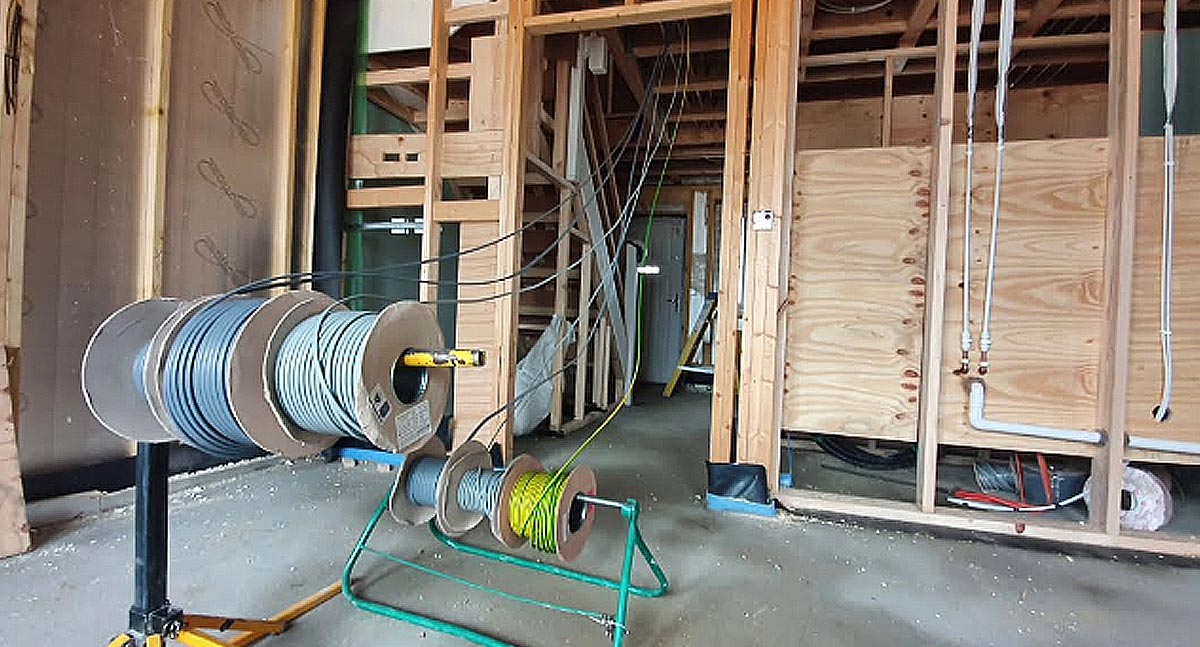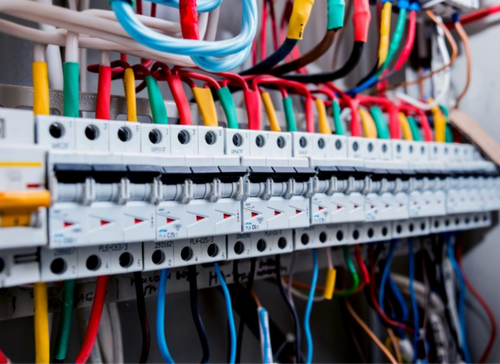Advanced BRE Automation Australia: Changing Your Automation Demands
Advanced BRE Automation Australia: Changing Your Automation Demands
Blog Article
The Ultimate Overview to Electrical Setup: Tips and Techniques for a Safe and Effective Home Wiring System
In the realm of home upkeep, few aspects are as important yet commonly forgotten as the electric circuitry system. By exploring the nuances of electric safety and security actions and energy-saving methods, this detailed overview will shed light on the complexities of home wiring, equipping people to take charge of their home's electrical framework.
Understanding Electrical Safety And Security Actions
To make certain the safety and security of both people and residential property, understanding and carrying out appropriate electrical safety and security measures is paramount in any home circuitry job. Electricity is an effective force that can be unsafe otherwise taken care of with care. One of the fundamental precaution is ensuring that all electric work is carried out by qualified specialists who follow neighborhood building ordinance and laws. It is vital to perform a thorough examination of the electrical system prior to starting any kind of electrical wiring task to determine possible hazards or concerns that need to be resolved.
Furthermore, making use of the appropriate tools and devices is crucial for maintaining safety and security during electrical setups. Shielded handwear covers, voltage testers, and safety eyewear are a few of the fundamental safety and security equipment that need to be put on to avoid electrical shocks or mishaps. It is likewise crucial to de-energize circuits prior to servicing them and to classify all circuits and breakers clearly to avoid complication.

Necessary Tools for Home Wiring
Ensuring the proper execution of electrical safety steps in home electrical wiring tasks entails utilizing a details collection of essential tools developed to help with the installation procedure efficiently and safely. Some of the secret devices needed for home electrical wiring projects consist of a voltage tester for examining live wires, wire pole dancers for removing insulation from wires, a wire cutter for precisely cutting wires to length, a screwdriver set for securing electric parts, electrical tape for insulation and protecting connections, a cord ripper for stripping cable television sheathing, and a multimeter for determining voltage, present, and resistance.
Step-by-Step Electric Setup Guide
Starting an electric installment job calls for careful planning and adherence to safety guidelines. Prior to starting any kind of job, ensure you have a comprehensive plan outlining the design of the electrical system, consisting of the positioning of outlets, switches, and components. Think about the power requirements of each tool to figure out the suitable wire gauge and breaker dimensions.
The primary step in the installation procedure is to shut down the power supply to the area where you will be working. Utilize a voltage tester to confirm that the circuits are de-energized before touching any wires. Next, thoroughly get rid of existing components or outlets and detach the wires.
When setting up brand-new electrical wiring, run cords with wall surfaces and ceilings, securing them in position with ideal fittings. Comply with neighborhood building codes and maker guidelines for proper cable installment and links. BRE Electrical. Make certain to label cords for simple identification and future upkeep

Troubleshooting Common Wiring Issues
Having actually completed the setup process as described in the previous subtopic, repairing usual circuitry concerns is an essential ability for making certain the security and performance of your electrical system. One usual concern is a tripped circuit breaker, often caused by overloaded circuits or a brief circuit. To repair this, find the breaker panel, recognize the stumbled breaker by trying to find the one not completely in the "on" position, and reset it by turning it completely to "off" and afterwards back to "on." Another common problem is a defective outlet, defined by no power or periodic power supply. Make sure the electrical outlet is not controlled by a switch, after that make use of a voltage tester to check for power. If there is no power, switch off the circuit, check the circuitry connections for any kind of loose or broken wires, and change the outlet if necessary. Constantly flickering lights can show BRE Electrical Solutions loose electrical wiring check my blog links or an overloaded circuit. To resolve this, check and tighten all cable links in the impacted components and buttons and redistribute the load on the circuit to balance the electric need. Routinely checking and immediately resolving these usual wiring concerns will certainly preserve the safety and security and efficiency of your home electrical system.
Tips for Energy-Efficient Electrical Systems
For ideal energy performance in electric systems, implementing smart practices and utilizing energy-saving technologies is critical. One key suggestion for accomplishing an energy-efficient electrical system is to upgrade to LED lighting. LED bulbs consume dramatically much less power than typical incandescent light bulbs and have a longer life expectancy, making them a cost-efficient selection over time. Additionally, mounting programmable thermostats can aid manage home heating and cooling down systems, reducing power waste when no person is home. One more method is to invest in energy-efficient appliances that are ENERGY STAR certified, ensuring they fulfill high requirements for energy efficiency. Appropriate insulation and sealing of windows, doors, and electric outlets can likewise avoid energy loss, inevitably reducing the work on electrical systems. Think about incorporating renewable power sources like solar panels to more reduction dependence on typical power grids. By including these energy-efficient ideas and modern technologies, homeowners can not only save cash on their electricity costs yet likewise reduce their ecological impact.
Final Thought
Finally, look at here executing correct safety steps, making use of important devices, following a step-by-step setup overview, repairing common problems, and including energy-efficient tips are important for a secure and efficient home wiring system. By adhering to these techniques, property owners can make sure the long life and capability of their electric installations. It is very important to focus on safety and security and effectiveness when it comes to electrical operate in order to avoid prospective hazards and to preserve a reputable electric system in the home.
Report this page